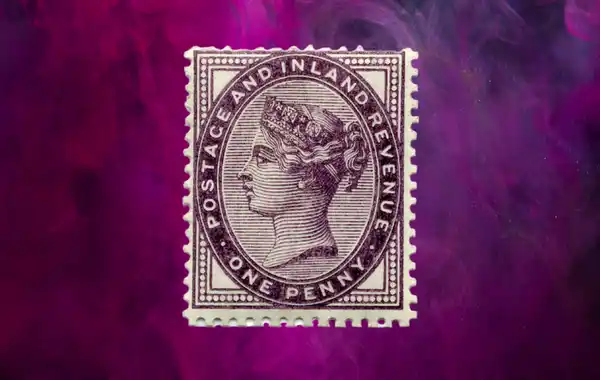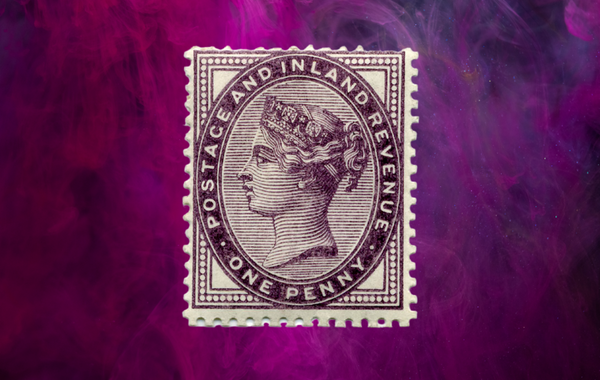26 August 2025
|
The Victorian 1d lilac stamp of 1881 was issued in its billions, proving to be one of Britain's most widely used stamps. Find out more about this 'workhouse' of Victorian stamps in our stamp guide.
The Penny Lilac was issued on 12th July 1881 and used until 1901. Toiling for almost twenty years, during which nearly forty billion were issued and used on the tidal waves of letters that travelled all over Britain several times a day. Almost everyone over the age of eight could read, write and lick a stamp.
What’s so special about the Penny Lilac?
The oval design of the frame around the monarch’s profile might have struck the eye as much as the colour alteration from the penny stamp it replaced. During the previous forty years the 1840 Penny Black stamp, Penny Red and Penny Venetian Red had each favoured a rectangular frame.
Almost as eye-catching was the lettering, altered from the traditional ‘POSTAGE’ to the new ‘POSTAGE AND INLAND REVENUE.’ These things make the Penny Lilac a rather special stamp.
Why was the Penny Lilac stamp issued?
The oval frame provides a clue to the reason for this issue: it was an adaptation from the design used, from the early 1860s, for Great Britain’s revenue stamps.
The Customs and Revenue Act of 1881 called for a single stamp that could be used for both postal and fiscal use. This was achieved by including the words postage and inland revenue in the design of the new stamp.
The printers, De La Rue, used a double-fugitive ink to prevent the removal of both postmarks and handwritten fiscal markings, neither of which could be achieved without altering the colour of the stamp.
Penny Lilac stamps are often found as ‘perfins’, with initials or emblems added as perforations to mint stamps to prevent theft.
There was a number of printing accidents that resulted in stamps with the design joining the reverse gum.
Suggested Article: How to Collect Penny Black Stamps
Die I
The Die 1 version can be recognised by the 14 dots in each corner. From July to December 1881, 495,984,000 from Die I were issued.
Different colour shades are available which gives the collector many varieties to pursue.
Die II
Die 2 can be recognised by 16 dots in each corner. From December 1881 to early 1901 the crazy number 33,600,00,00 were issued from Die 2.
The two extra dots in each corner of the stamp’s outer frame allowed the lettering around the inner oval frame a little more space, thus improving legibility.
Penny Lilac Stamp Value
The value of the Penny Lilac, or the ‘Inland Revenue stamp’, varies significantly from less than a pound for commonly used examples to many pounds for stamps in superior condition. It is also worth a lot when there is a rare variety with an error like a different watermark or an unusual cancellation.
Different years and overprints have different values. Also, any stamps with errors, like watermarks or colour variations can greatly increase a stamps value, sometimes by hundreds or even thousands of pounds.
A standard Die II version would sell on the second-hand market for around £30 at the moment but this is without any rareness or errors.
Read more in-depth collecting guides in every issue of Stamp Collector inc Coin Collector magazine








